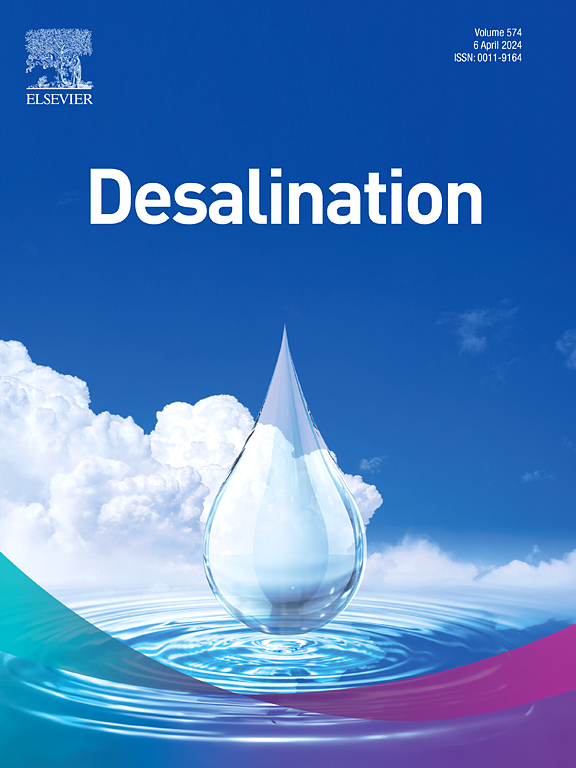Dictyophora-based evaporator developed by sericin bidirectional crosslinking for photocatalytic degradation and efficient solar desalination in harsh environments
IF 8.3
1区 工程技术
Q1 ENGINEERING, CHEMICAL
引用次数: 0
Abstract
This study introduces a novel dictyophora-based evaporator, SCNT/TiO2@PAM-DIC, developed through a pioneering sericin bidirectional crosslinking strategy. This innovative material boasts a range of advantages, including environmental friendliness, salt resistance, antibacterial properties, acid and alkali resistance, oil repellency, and pressure resistance. By incorporating polyacrylamide (PAM) hydrogel enhanced with sericin, SCNT/TiO2@PAM-DIC significantly improves the mechanical strength of dictyophora while offering anti-fouling, antibacterial, and high-efficiency evaporation capabilities. Unlike its predecessor DIC, SCNT/TiO2@PAM-DIC retains a porous structure with a smoother surface, enabling multiple sunlight reflections and prolonged exposure, which enhances its solar absorption to an impressive 93 %. Photothermal conversion studies reveal that SCNT/TiO2@PAM-DIC achieves a surface temperature of 63.5 °C within 5 min, surpassing DIC (29.1 °C) and S@PAM-DIC (30.9 °C). The evaporation rate of SCNT/TiO2@PAM-DIC is significantly higher at 2.495 kg m−2 h−1, compared to 1.149 kg m−2 h−1 for DIC and 1.433 kg m−2 h−1 for S@PAM-DIC. Additionally, its dark evaporation rate is 1.8 times that of pure water. The material's exceptional salt rejection and self-cleaning properties are attributed to the presence of zwitterionic groups in its structure. Mechanically, SCNT/TiO2@PAM-DIC demonstrates superior compressive performance and stability, with compressive stresses of 0.516 MPa at a 25 % compression ratio, significantly higher than DIC's 0.104 MPa. Furthermore, it achieves an 83.5 % photocatalytic degradation efficiency of methylene blue within 3 h. Its robust performance in challenging environments, such as oily wastewater, emulsified oil, organic dyes, and acidic/alkaline solutions, positions SCNT/TiO2@PAM-DIC as a promising solution for advanced water purification technologies, offering a new avenue for sustainable water treatment.
求助全文
约1分钟内获得全文
求助全文
来源期刊

Desalination
工程技术-工程:化工
CiteScore
14.60
自引率
20.20%
发文量
619
审稿时长
41 days
期刊介绍:
Desalination is a scholarly journal that focuses on the field of desalination materials, processes, and associated technologies. It encompasses a wide range of disciplines and aims to publish exceptional papers in this area.
The journal invites submissions that explicitly revolve around water desalting and its applications to various sources such as seawater, groundwater, and wastewater. It particularly encourages research on diverse desalination methods including thermal, membrane, sorption, and hybrid processes.
By providing a platform for innovative studies, Desalination aims to advance the understanding and development of desalination technologies, promoting sustainable solutions for water scarcity challenges.
 求助内容:
求助内容: 应助结果提醒方式:
应助结果提醒方式:


